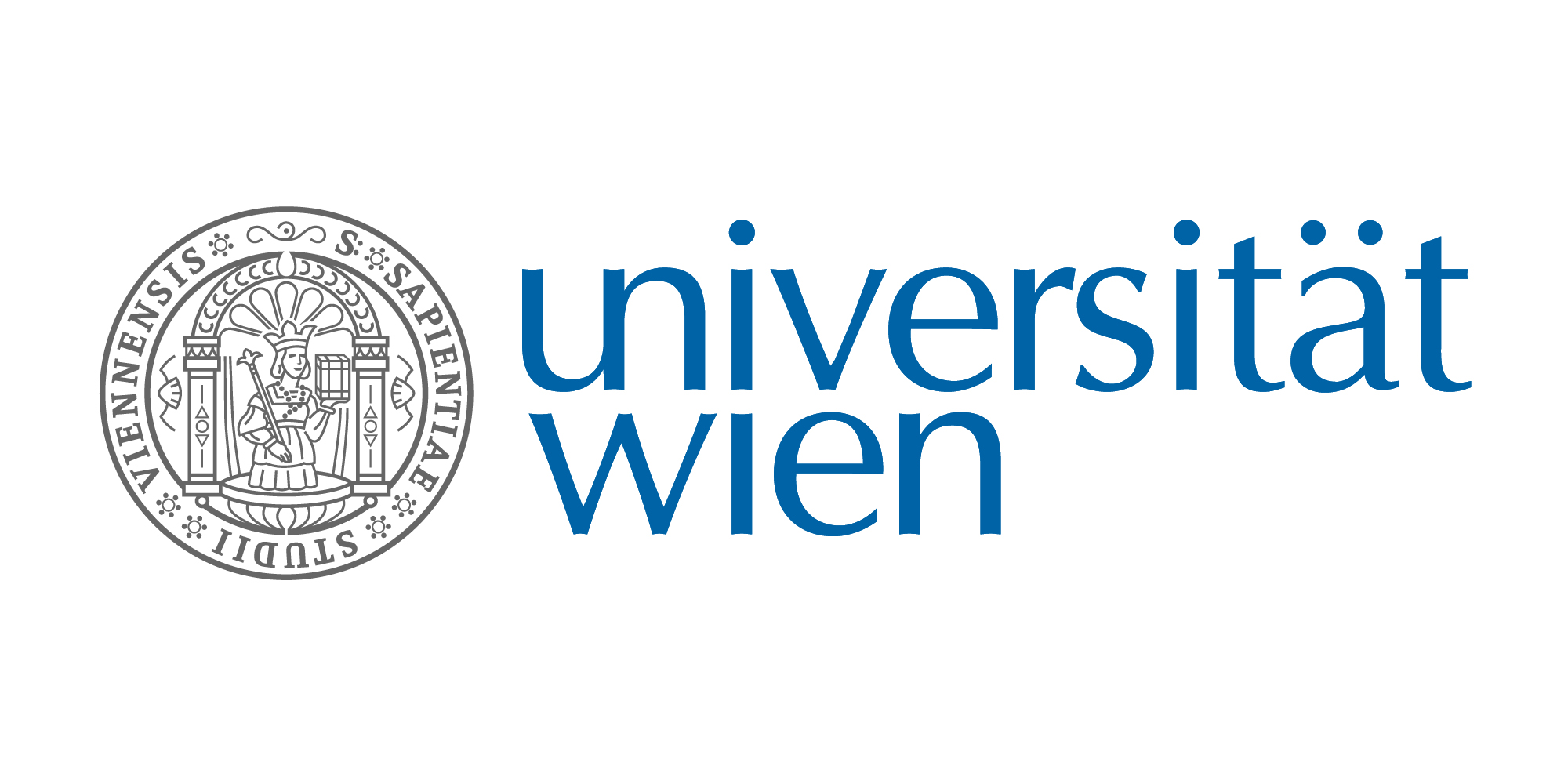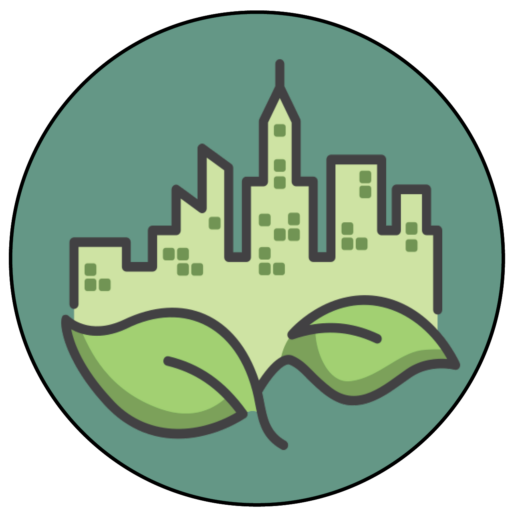4CITIES Excursion to Ljubljana - Regenerating and Reinventing Cities
What can Cities Learn from Ljubljana’s Approach to Urban Rejuvenation?
Ljubljana, the capital of Slovenia, is embedded in a rich Habsburg and socialist history and underwent comprehensive and rapid urban renewal in the last 15 to 20 years. The lush green city of approximately 300,000 inhabitants combines a car free center with extensive, safe cycling infrastructure.
In 2016, the city earned the “European Green Capital” award due to its holistic approach to integrating green spaces and sustainable infrastructure, fueling tourism and an overall improvement in livability. Accordingly, the 4CITIES excursion to Ljubljana, from May 04 – 07, 2023 set out to explore the city’s regeneration and reinvention leading to an insightful and inspiring experience that incorporated a range of learning opportunities for all 36 4CITIES students.
Day 1: The history and the present
The excursion began with a 3-hour long tour of the city center to provide students with a general city overview and information regarding Ljubljana and Slovenia’s history. This way, we were equipped with sufficient background information to connect the city’s current processes and problems to its history. The tour guide also provided us with a resident’s take on Ljubljana’s over-tourism, who contested the vanishing of green spaces were due to the recent building construction throughout the city’s green pockets, highlighting the ongoing contestation between public and private interests.
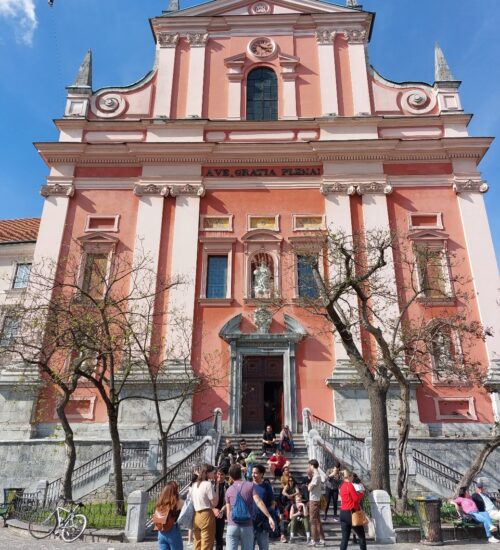
Day 2: About green cities, active school travel and squatting
The first full day of the excursion started early with a visit at Ljubljana’s town hall. Simona Berden welcomed us by giving an overview of current (re-)development projects in the city and information on the town hall building itself. Subsequently, we were guided to the historic plenary hall where we learned about the city’s efforts to make Ljubljana more sustainable, which included mobility-related improvements, such as establishing a well-used public bike sharing system (“BicikeLJ”), electric micro busses which provide public transportation in the city center free of charge (“Kavalir”), calming of the busy Slovenska street by making it a shared space, and creating a car-free city center. Moreover, various urban agriculture projects were implemented such urban beekeeping to allotment gardens, alongside various public parks. Parallels could be drawn between Vienna, as Mrs. Berden noted a strong societal resistance to restricting car-use.
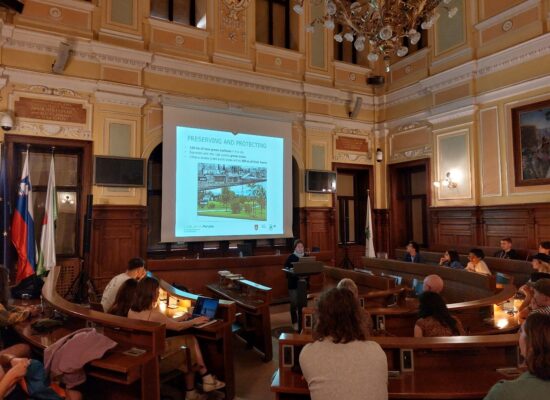
The day continued with a presentation by Maja Simoneti from the Institute for Spatial Policies (IPoP), an NGO concerned with the development of sustainable urban communities. She shared information regarding a healthy cities project which prioritized active travel to school and was funded by the Slovenian Ministry of Health to act upon overweight children. In direct cooperation with school children, different approaches to promote walking and biking to school were developed and tested in pilot projects.
The initial walking and biking busses turned to broader walkability plans for communities and kiss and ride zones. This project exemplified how fruitful child participation in urban development and planning can be and that it often takes time and multiple attempts to develop a contextually rooted, feasible, and socially supported sustainable solution.
Domen Žalac, a spatial sociology PhD-Student at the University of Ljubljana, had prepared a packed program for our afternoon during which we left the tourist path and explored neighborhoods characterized by different eras and functions. We learned about the blurred division of rural and urban Slovenia and the long history of urban agriculture. We saw medieval, modern, socialist and post-modern houses – some being touristified – and also student housing. Another strong focus was on autonomous zones and squats. In Metelkova, previous military barracks that have been squatted for 30 years, we were welcomed into the anarchist info center and learned not only about its history but also its various operating and maintenance challenges.
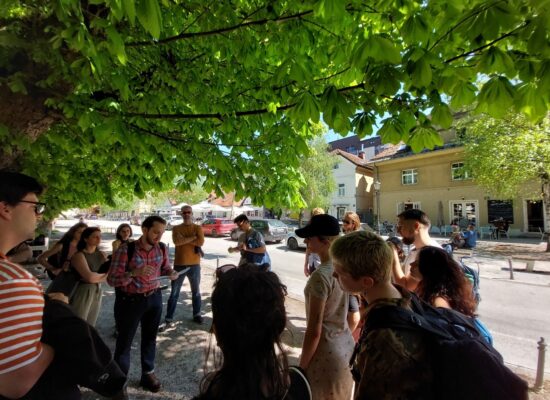
PLAC, a former company cafeteria in Bežigrad, has only been squatted since September last year and acts as a diverse social and cultural space where, e.g., Jazz, karaoke nights, and film screenings are hosted, children can celebrate their birthdays or people can participate in free martial arts.
PLAC does not act as an alternative to the society but alongside the society’s actual values, according to one of its activists. The official day ended with discussing the squat’s place in the capitalist system and their dependency on gift economy.
Day 3: Tactical urbanism & cultural heritage
Our morning revolved around Prostorož’s efforts to improving the sojourn quality around Ljubljana’s University clinical center. The non-profit urban design studio uses a tactical urbanism approach to improving the quality of public spaces. Through participatory mapping of hot spots in Ljubljana, it became evident that action should be taken in the area of the clinical center.
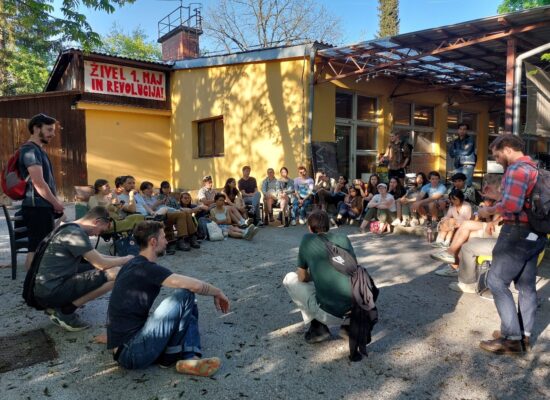
Following observations of different users of the space – personnel, in-patients and out-patients – 20 benches were installed. A short online survey revealed that the benches should stay before workshops and interviews provided more insight into people’s demands, relevant to the area’s redesign. Alenka Korenjak’s elaboration on the project raised awareness regarding a projects lengthy evolution while providing insights into the comprehensive (background) information needed to ensure the specific demands arising from contextual details are incorporated into the initiative.
The afternoon was spent with a scenic walk/funicular ride to Ljubljana castle for some sight-seeing and a stunning overview of the city, before Matevž Straus, a 4CITIES alumnus, presented his take on the regeneration of Idrija, his 7000-inhabitant home town about an hour East of Ljubljana. The town’s history is coined by mercury extraction and processing. After the mines were closed in the 1990s, the people were able to find work in other factories in town established during the socialist regime. Nonetheless, the town has been losing population, as have 52% of all Slovenian towns since 2011.
In an attempt to revitalize the town and better cater to youths, he initiated the association Idrija 2020, which proposed 60 possible measures after in-depth analysis of the town, through a social, political and architectural lens. This gave rise to ID20, which works mostly on cultural heritage and in turn, established events like a festival of industrial culture taking place in Idrija and “Heritagehack”, a hackathon on cultural heritage.
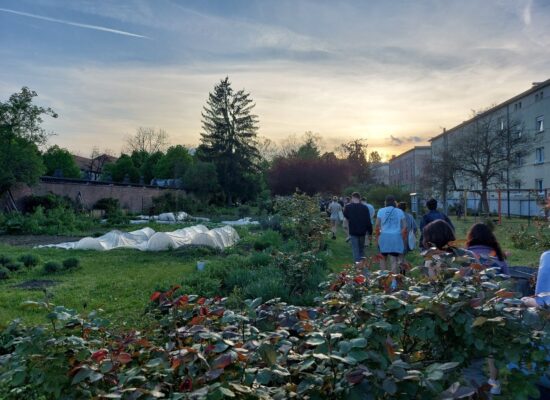
Matevž showed us the other side of the coin, where cities and towns fight against population loss, rather than growth, and encouraged us to take matters into our own hands if we want to advance our home towns.
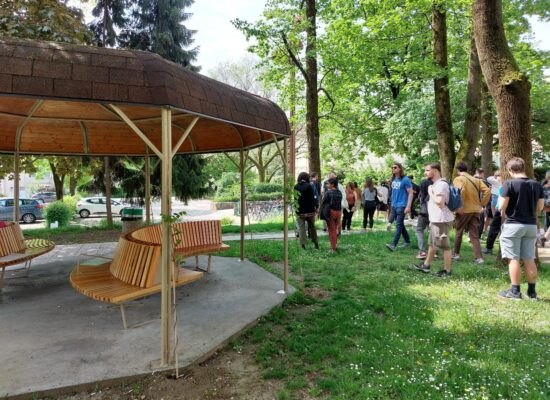
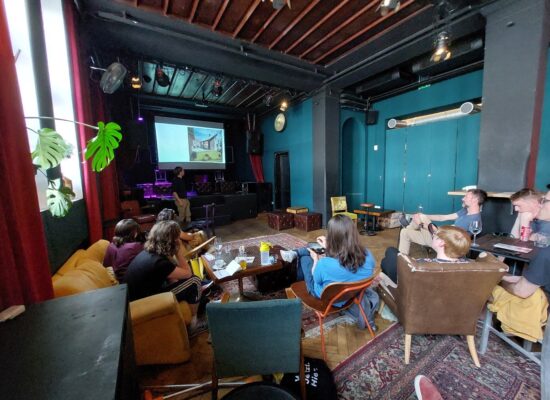
Day 4: The city through different lenses: Graffiti and LGBTQ+
The excursion was concluded with a street art tour led by Katja Pavlič. She introduced us to the different forms of graffiti and their history in Ljubljana, while also explaining street art’s distinct terminology and its flourishing diversity. The tour also provided insight into the graffiti scene’s moral codex. Alternatively, some 4citizens decided to join a tour on the LGBTQ+ movement, their important places and struggles before and during socialism, as well as current LGBTQ+ friendly venues, led by a long-term activist.
Guided by the 4CITIES lecturer Josh Grigsby and supported by student assistant Julia Thurner, this excursion represents one of the highlights within the Vienna semester. We would like to thank all experts for their interesting and thought-provoking input. All 36 4CITIES students enjoyed the city, and not only did the excursion bring this cohort of Urban Studies students closer together, we all left with a backpack full of new and inspiring ideas.
Article by Julia Thurner, student assistant at the Urban Studies working group.
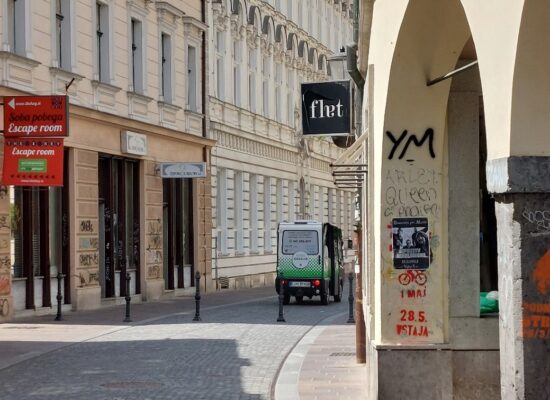
About the city – development timeline
The city boasts an interesting mix of architecture as different time periods, rulings, incidents and individuals left their mark and shaped the city. First settled with stilt houses (pile dwellings), due to its proximity to a large lake, 5,000 years ago, after the swamps were drained, a Roman settlement was erected. Medieval remains are still found in the Krakovo neighborhood and are omnipresent with Ljubljana Castle overtowering the city. Numerous baroque buildings are located in the center, alongside Art Nouveau style houses, built after a massive earthquake in 1895.
However, while few eras had the astounding architectural impact as the Habsburg monarchy, Jože Plečnik, a Slovene student of Otto Wagner, shaped the city like no other. Jože redesigned and conceptualized representative public places and buildings (e.g. the triple bridge, market, national library and congress square) that supported Ljubljana’s development from a small town to the capital of a new nation in the 20th century. His works are now regarded as UNESCO world heritage for their human-centered urban design. With Slovenia being part of Yugoslavia for several decades, socialist buildings are also found all over the city. Following Slovenia’s accession to the EU in 2004, the city underwent a comprehensive and nature inspired rapid urban renewal process for which it was granted the European Green Capital award in 2016.


